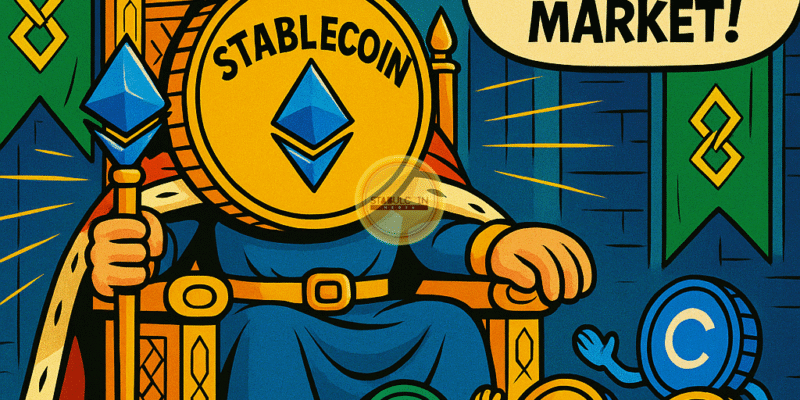Ethereum has tightened its grip on the stablecoin sector, now controlling more than half of the total market share. This milestone highlights the blockchain’s ability to stay ahead in a competitive environment and reinforces its role as the backbone of decentralized finance.
Stablecoins, which are digital currencies pegged to stable assets like the US dollar, have become an essential part of the crypto ecosystem. They allow traders, businesses, and everyday users to move money quickly without the volatility often associated with cryptocurrencies. From remittances to savings, stablecoins are now a common tool in many parts of the world.
Why Ethereum Leads in Stablecoins
Ethereum’s large developer community, robust infrastructure, and strong track record have made it the preferred network for major stablecoin issuers. Popular assets such as USDT, USDC, and DAI rely heavily on Ethereum for their operations. These tokens benefit from deep liquidity and are integrated across many decentralized applications, making them easy to trade, lend, or borrow.
Other blockchains like Tron, Binance Smart Chain, and Solana have gained ground by offering lower fees and faster transactions. Despite this, Ethereum’s consistent performance and security keep it in the lead. Its ongoing upgrades, including Layer-2 scaling solutions like Arbitrum, Optimism, and Base, are helping to address cost and speed challenges.
The Numbers Behind Ethereum’s Market Share
Recent analysis confirms that more than half of all stablecoin value in circulation is on Ethereum. This represents billions of dollars in assets moving across its network every day. Its dominance is driven by both institutional and retail adoption, as users trust its security, transparency, and compatibility with other blockchain tools.
Challenges and Opportunities
Ethereum’s leadership position is strong but not without challenges. Competing blockchains are targeting the stablecoin market with aggressive incentives, faster settlement speeds, and lower fees. To maintain its edge, Ethereum will need to continue investing in scalability and user-friendly experiences.
Layer-2 solutions are already proving to be an effective strategy for retaining market share. These networks process transactions off the main Ethereum chain while maintaining the security of the base layer, allowing users to enjoy lower fees and faster confirmation times.
The Bigger Picture for Crypto
Stablecoins are more than a crypto trading tool. In regions facing currency instability or limited banking access, they provide a reliable store of value and an easier way to make payments. Ethereum’s stronghold in this market means it will continue shaping how digital money is used around the world.
If current trends continue, Ethereum’s influence over the stablecoin sector could remain unchallenged for years. The combination of proven technology, community trust, and ongoing innovation places it in a prime position to lead the next chapter of global digital finance.

Comments